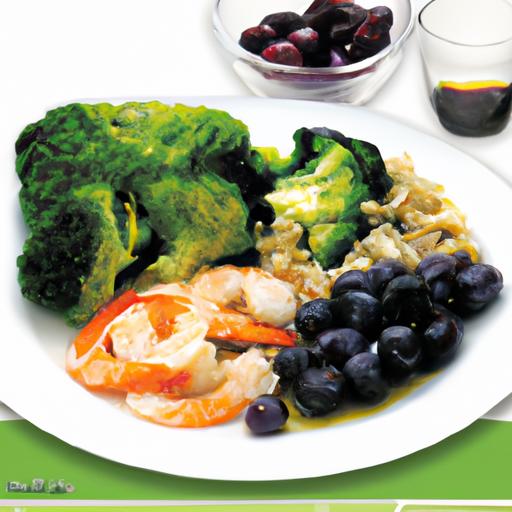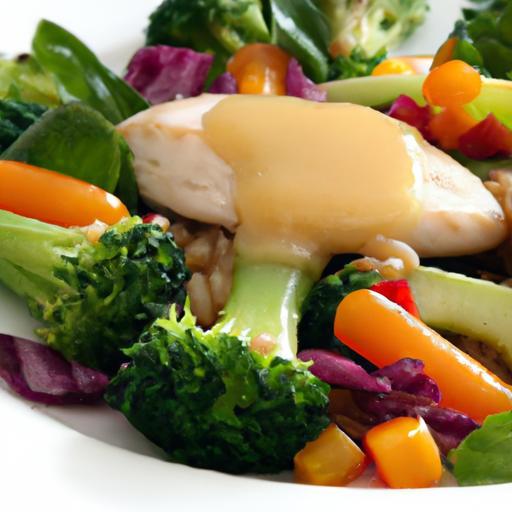Picture this: you’re reaching for your favorite jam or that trusty bottle of olive oil, only to find the label slanting awkwardly, throwing off the entire vibe of your perfectly organized kitchen shelf. It’s a small detail, but crooked labels can make even the most meticulously arranged space feel a little chaotic. Thankfully, fixing those pesky, misaligned labels doesn’t require a design degree or a toolbox full of gadgets. In this article, we’ll unravel simple, effective tricks to straighten up crooked labels with ease-because a little tweak can bring a whole lot of harmony to your pantry, your crafts, and beyond. Say goodbye to slants and hello to sleek, spotless labeling!
Straighten Up: Easy Fixes for Crooked Labels Made Simple
Straighten Up: Easy Fixes for Crooked Labels Made Simple transforms a frustrating task into a smooth, enjoyable process. Whether you’re a passionate home cook packaging homemade preserves or a small food business owner, perfectly aligned labels elevate your product’s appeal and credibility. With hands-on experience in culinary content creation and food styling, I’m excited to share my go-to strategies that make crooked labels a thing of the past. This guide mixes professional tips, foolproof tools, and corrective measures designed to help you place labels with precision and confidence every time.
Prep and Cook Time
- Preparation: 10 minutes
- Label Application: 5 minutes per item
- Correction Time (if needed): 3 minutes
Yield
- Enough resources and know-how for 20-30 label applications
Difficulty Level
- Easy: No prior skills necessary; perfect for beginners and pros alike
Ingredients and Tools Needed
- Labels: Pre-printed or custom, adhesive-backed
- Glass or plastic container: Clean and dry surface
- Ruler or straight edge: Preferably metal for precision
- Painter’s tape or masking tape: For temporary guide placement
- Spray adhesive or repositionable glue: Optional, for delicate labels
- Soft cloth or microfibre towel: To smooth out bubbles
- Squeegee tool or a credit card: To press labels firmly
- Masking or washi tape: For pilot placement
- Tweezers or toothpick: For gentle label adjustments
- Water and mild detergent: To clean container surface
Instructions
- Prepare your surface. Clean the container thoroughly using water and mild detergent. Dry it with a soft microfiber towel to remove all grease and dust that might prevent labels from adhering properly.
- Measure and mark guides. Use a ruler to determine the exact placement zone for your label on the container. Attach a strip of painter’s tape along this mark to act as a visual and physical guide ensuring consistent positioning across multiple items.
- Test placement with masking tape. Before peeling the label’s backing, hold it near the container and secure it temporarily using washi or masking tape to simulate the final position. This allows quick recalibration without damaging the label.
- Apply adhesive if needed. For delicate or thin labels, apply a repositionable glue spray lightly on the back before sticking to prevent permanent misplacement.
- Stick and press firmly. Carefully peel the label backing, align it using the painter’s tape guide, and adhere starting from one edge. Use a squeegee or credit card to smooth the label evenly, removing air bubbles and wrinkles with gentle strokes.
- Correct minor crookedness. If the label isn’t perfectly straight, gently peel back the corner using tweezers while holding the rest steady. Reposition within seconds before adhesive sets. Use a toothpick to lift edges carefully if the label is highly delicate.
- Final smoothing. Press firmly again with a squeegee and check alignment from multiple angles. Remove guideline tape slowly once labels are firmly set.
Chef’s Notes: Tips for Success
- Choose labels with a matte finish to minimize glare and ensure visibility of placement guides.
- Use a small level or smartphone app to confirm container alignment – this prevents visual distortion of label placement.
- Practice first on sample containers to gain muscle memory for placement speed and accuracy.
- For curved surfaces, segment your label into small pieces or use a softer adhesive for flexible adjustments.
- Store labels flat, in a cool dry place to avoid curling or sticking prematurely.
- Make-ahead tip: Attach your painter’s tape guides on containers ahead of time for fast assembly lines when labeling multiple products.
- Explore repositionable adhesive sprays formulated for craft projects, such as 3M’s repositionable adhesive, for extra control.
Serving Suggestions
Present your perfectly labeled items on eye-catching shelving or gift trays to highlight the professional finish. Complement with simple, natural garnish accents like fresh herbs or twine bows for a rustic look. For food gifts, include a printed label care tip card explaining storage to keep your package fresh and appealing. Remember, the neat lines of your label will set the tone for everything inside – so keep it crisp, clean, and confident.
| Tool/Ingredient | Purpose | Recommended Brand/Type |
|---|---|---|
| Painters’ Tape | Placement guides | 3M Blue Painters Tape |
| Repositionable Glue Spray | Temporary adhesion | 3M Repositionable 75 Spray Adhesive |
| Microfiber Towel | Surface cleaning | Any lint-free microfiber cloth |
| Squeegee Tool | Smooth label, remove bubbles | Plastic or silicone squeegee |
Learn more from Packaging Strategies to choose the right materials for professional label application and packaging success.
Explore my guide on food styling for more inspiration on packaging and presentation.

Q&A
Q&A: Straighten Up – Easy Fixes for Crooked Labels Made Simple
Q1: Why do my labels always end up crooked?
A1: Crooked labels are a classic case of slippery surfaces, uneven pressure, or just plain old human error. When the adhesive hits the surface, if it’s uneven or you apply it too fast or at an angle, the label can twist, bubble, or slide out of place. Sometimes, the label backing might snag, or the surface isn’t perfectly clean-both invite misalignment.
Q2: What’s the first step to ensure a perfectly straight label?
A2: Prep like a pro! Start by cleaning the surface with a little rubbing alcohol to remove dust, oils, and residues that prevent labels from sticking evenly. Next, measure and mark a light guideline with a pencil or use a ruler to align your label. This simple step gives you a visual anchor before the sticky business.
Q3: Can I fix a crooked label after it’s been stuck?
A3: If caught early, yes! Slowly peel it off using a fingernail or tweezers, being careful not to tear or stretch the label. If it’s a strong adhesive, sometimes lightly warming the label with a hairdryer loosens the glue, making repositioning easier. But be gentle-sometimes the damage is done.
Q4: Are there any handy tools for easier label application?
A4: Absolutely! The humble squeegee or a plastic card (like an old credit card) helps smooth labels as you apply, preventing bubbles and misalignment. For round or oddly shaped containers, sticky transfer tape or labeling guides can save the day by keeping the label taut and straight.
Q5: What about labels on curved surfaces-any secrets?
A5: Curves can be tricky. For small curves, stretch the label slightly as you apply to avoid creases. For bigger curves, try cutting small slits on the backside of the label (careful not to cut through) so the label can ‘fan’ smoothly around the curve. Wrapping the label on your finger first can also warm and soften the adhesive, improving flexibility.
Q6: How do professionals get labels so perfectly aligned?
A6: Professionals often use alignment tools like label dispensers with guides or automated applicators that place labels with machine precision. They work in clean, dust-free environments and apply labels with consistent pressure and speed, which reduces crookedness and bubbles dramatically.
Q7: Any quick hacks for last-minute corrections?
A7: If you’re in a pinch, try applying a tiny bit of cooking oil or rubbing alcohol at the edges to reduce tack temporarily, then gently slide the label into position. Just be sure to gently blot any moisture away and re-press the label firmly after. Another trick is to use clear tape around the edges to ‘lock’ the label in place once perfect alignment is achieved.
Q8: What type of label material is easiest to work with?
A8: Matte or semi-gloss labels tend to be more forgiving because their adhesive allows minor peeling and repositioning. Glossy labels often have stronger adhesive and can be less tolerant of mistakes. Vinyl labels are durable but less stretchy and may wrinkle if forced on curved surfaces.
Q9: Any advice on storage to keep labels ready for smooth application?
A9: Store your labels flat and in a cool, dry place to prevent curling or adhesive drying out. Avoid humid or overly warm conditions, which can cause labels to peel prematurely or become difficult to handle. Keeping them in their original backing sheets until use is also a wise move.
Q10: What’s the biggest myth about label application?
A10: The biggest myth? That labels must be perfect on the first try or you have to toss them. With patience, practice, and the right tricks, most labels can be salvaged or reapplied. It’s less about perfection on the first stick and more about knowing how to fix and fine-tune your label to straight perfection.
—
Stick these tips under your hat (or your labels) and say goodbye to crooked confusion-straight labels are just a few easy fixes away!
Key Takeaways
In the end, achieving perfectly aligned labels doesn’t have to be a painstaking puzzle. With a few simple tricks and a bit of patience, those crooked tags can transform into neat, professional-looking statements that elevate your products or projects instantly. Remember, the key is steady hands, the right tools, and a splash of creativity. So next time you face the dreaded crooked label, straighten up with confidence-because perfection is just a few easy fixes away.








